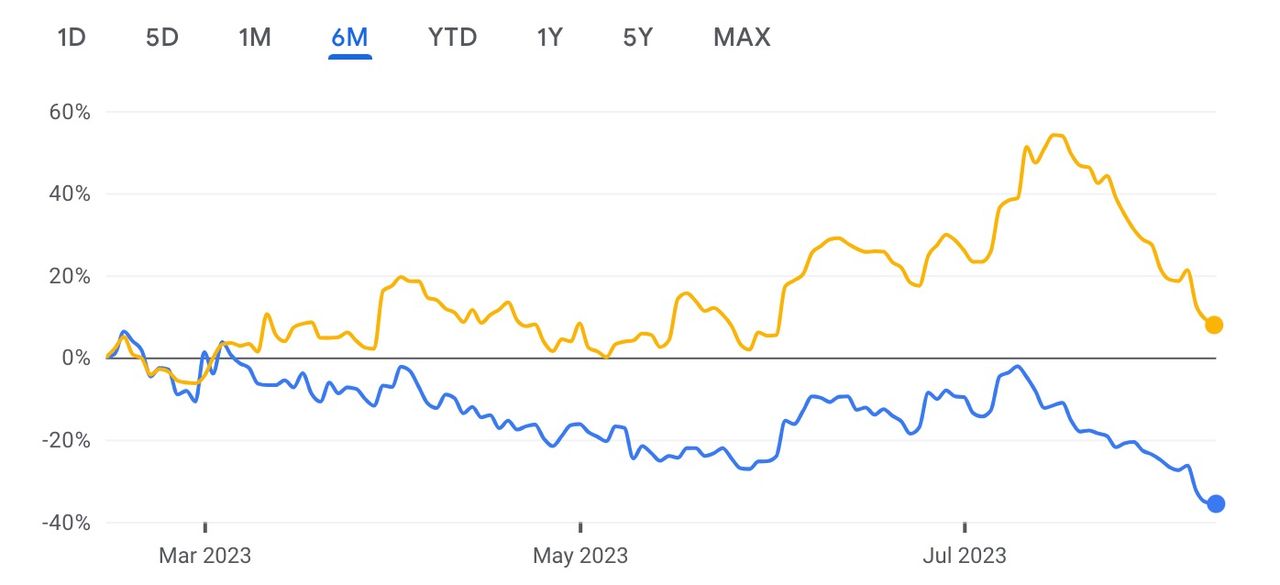
Once again we take a look at the valuations of the major 3D printing companies over the past week.
Publicly traded companies are required to post their financial reports, as well as appear on stock markets. From there we can calculate the total value of their company by multiplying the current stock price by the number of outstanding shares. This number is the market capitalization, and represents the current valuation of the company.
It’s a great number of compare companies, as the market capitalization can be leveraged to provide more capabilities for the company. Shares could, for example, be used as collateral for a loan. That and similar maneuvers could generate cash with which the company might undertake new projects.
In other words, “market cap”, as it is known, is quite important.
You might think it’s not important to monitor these companies each week, as their value is realized only when stocks are sold. However, events happen to companies occasionally that cause their value to rise and fall, and this weekly post is where we track such things.
Note that our list here does not include all major 3D print companies. Not all 3D print companies are publicly traded, and thus we cannot officially know their true size, such as EOS. Others, like HP or Siemens, have very large 3D printing divisions, but are part a much larger enterprises and we cannot know the true size of their 3D printing activities.
Let’s take a look at the 3D printing companies on this week’s list.
3D Printing Leaderboard
| RANK | COMPANY | CAP | CHG |
| 1 | Stratasys | 1,028 | -105 |
| 2 | 3D Systems | 942 | -131 |
| 3 | Xometry | 773 | -52 |
| 4 | Protolabs | 745 | -58 |
| 5 | Nano Dimension | 727 | +20 |
| 6 | SLM Solutions | 648 | -4 |
| 7 | Desktop Metal | 523 | -39 |
| 8 | Materialise | 425 | -32 |
| 9 | Velo3D | 302 | -79 |
| 10 | Markforged | 277 | -104 |
| 11 | FATHOM | 106 | +5 |
| 12 | Steakholder Foods | 45 | 0 |
| 13 | Massivit | 37 | -1 |
| 14 | Shapeways | 24 | -6 |
| 15 | Freemelt | 21 | -0 |
| 16 | voxeljet | 14 | -0 |
| 17 | Titomic | 11 | +4 |
| 18 | Sigma Additive Solutions | 11 | 0 |
| 19 | AML3D | 11 | +0 |
| 20 | Sygnis | 8 | +0 |
| 21 | Aurora Labs | 4 | +0 |
| TOTAL | 6,683 | -582 |
This week was a down week for most of the major indices, with the tech-laden NASDAQ dipping around two percent. That doesn’t bode well for the 3D print companies, which tend to exaggerate such trends.
True to the pattern, the leaderboard total dipped quite a bit this week, dropping a whopping eight percent. In all, some US$600M was erased from the leaderboard. As usual, some companies fared better than others.
Regardless of the downward trend this week, Stratasys maintained their top position over 3D Systems. 3D Systems has been at the top of the leaderboard for a very long time, being displaced for a while by Xometry. But as a result of persistent takeover offers for Stratasys, that company’s valuation has now made them larger than 3D Systems — and this has been the case for several weeks. In other words, it’s not just a temporary phenomenon.

Stratasys dipped nine percent, while rival 3D Systems dropped even more at twelve percent. The longer term trend seems to have Stratasys gaining value, while 3D Systems is dropping, as you can see in this six-month chart.
FATHOM continued its recovery pattern, gaining almost five percent this week. When combined with the overall drop of eight percent, that’s almost like a 13% gain this week.
Nano Dimension, one of the bidders for Stratasys, rose close to three percent this week, likely due to investors rewarding the company for NOT proceeding with the Stratasys acquisition.
On the dark side of the ledger, we have Markforged, which plunged in value almost 28% this week. This is almost certainly due to their latest financial report, which shows a slight drop in revenue from last year, and a worrying drop in margin. Those suggest the company might not be growing as fast as investors want, leading to the drop in valuation. However, the company is profitable, unlike many others.
Velo3D also dropped nearly 21% in value this week after their Q2 financials were released. However, their results were actually quite good, with a 28% increase in revenue. This was positive, but their net income was still quite negative, although with less of a loss than 2022Q2. The company has a margin of only 12%, which seems low compared to some other 3D print companies, but Velo3D has increased it slightly this quarter. Finally, they have announced intentions to raise US$70M in investment, which is a good idea considering their cash on hand is only US$47M with a quarterly loss of US$23M. Evidently investors didn’t like the results and acted appropriately.
Upcoming Changes
A company set to appear was Essentium, who announced plans to use a SPAC-merger to launch on NASDAQ. However, that deal has been suspended so we’re wondering what the company’s next steps might be.
One company I’ve started to watch is ICON, the Texas-based construction 3D printer manufacturer. This privately-held company has been raising a significant amount of investment to the tune of almost half a billion dollars. At that level it is likely they will be discussing a transition to public markets at some point, which would certainly place them at or near the top of our leaderboard.
Another company that would seem logical to go public is VulcanForms, a manufacturing service using an advanced metal 3D printing process. They are currently privately valued at over US$1B, and going public could cause that to go even higher.
If you are aware of any other publicly-traded 3D print companies that should be on our leaderboard, please let us know!
Others In The Industry
While we’ve been following the public companies, don’t forget there are a number of private companies that don’t appear on any stock exchange. These privately-held companies likely have significant value, it’s just that we can’t know exactly what it is at any moment. The suspected bigger companies include EOS, Carbon and Formlabs.
Perhaps someday some of them will appear on our major players list.
Related Companies
Finally, there are a number of companies that are deeply engaged in the 3D print industry, but that activity is only a small slice of their operations. Thus it’s not fair to place them on the lists above because we don’t really know where their true 3D print activities lie.
